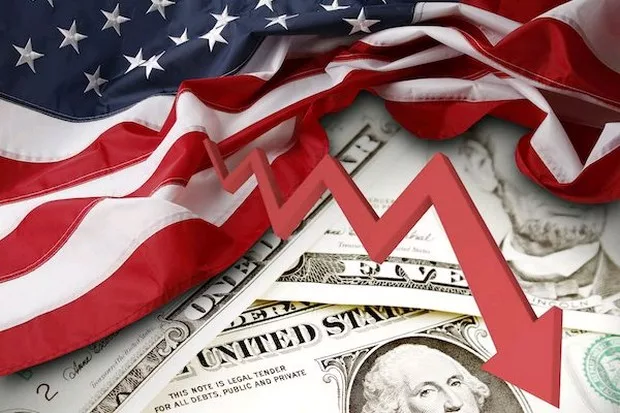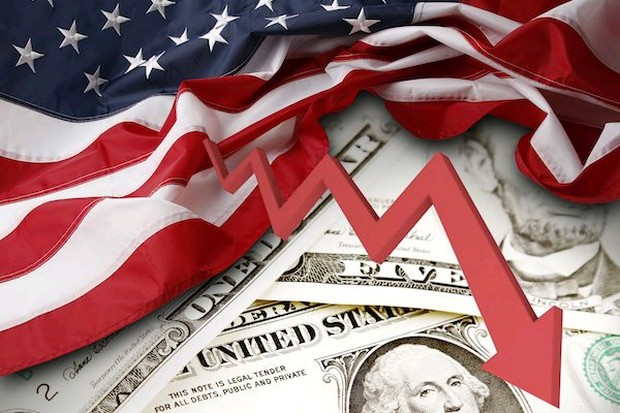US GDP grows at a respectable 2.9% rate, but symptoms of decline are increasing.

The US economy grew at a strong rate in the fourth quarter, but signals of weakening underlying demand increased as this year’s growth is threatened by the highest interest-rate increases in decades.
After rising by 3.2% in the third quarter, the gross domestic product expanded at a pace of 2.9% annualized in the last three months of 2022, according to the Commerce Department’s preliminary estimate released on Thursday. While government spending equalled the largest boost since early 2021, around half of the GDP increase was due to inventory expansion.
The largest sector of the economy, personal consumption, expanded at a slower-than-expected 2.1% rate. With authorities planning to further slow down their rate rises next week and debating when to halt, the mixed data shows that the Federal Reserve still has a route to a soft landing. Their preferred price measure increased at the weakest rate in the past two years, but another data revealed that jobless claims were still very low.
The report indicated some symptoms of tension among American consumers, whose incomes have lagged behind inflation and who have been urged to withdraw from their epidemic relief reserves. The weight of rising borrowing rates and high prices is increasing, signaling a shaky future for the economy.
“When we examine the consumer, which is the engine of the US economy, we clearly witness a loss of momentum, “Lindsey Piegza, the Chicago-based Stifel Nicolaus & Co.’s chief economist, made the statement on Bloomberg Television. “We simply cannot expect to continue good growth, much less more robust growth, without the customer happy and healthy out in the marketplace.” “until the year’s conclusion, she added.
Inflation-adjusted final sales to domestic purchasers, a key indicator of underlying demand that excludes the trade and inventories components, increased by an annualised 0.8% in the fourth quarter following a 1.5% gain. The only increase in final domestic sales to private buyers was 0.2%, the smallest increase since the second quarter of 2020.
According to the most recent Bloomberg monthly survey, experts expect the economy will contract in the second and third quarters, giving a recession in the following year a 65% chance of occurring. After the GDP data and better-than-expected weekly unemployment claims, stock-index futures, Treasury rates, and the currency all remained higher. Last week, the number of applications for unemployment benefits fell to 186,000, the lowest number since April.
According to recent research, fissures are spreading further. Data on retail and auto sales revealed that individuals are beginning to cut back, the housing market is still sluggish, and some corporations are rethinking their capital investment plans. Manufacturing and housing markets have rapidly worsened as a result of the Fed’s ongoing interest rate increases to combat inflation, and sectors like banking and technology are laying off large numbers of workers.
The personal consumption expenditures price index, a crucial inflation indicator for the Fed, increased at an annualized rate of 3.2% in the fourth quarter, the weakest increase since 2020 and down from a 4.3% rate in the previous three months, according to the GDP data. The rate of growth for the core index, which excludes food and energy, slowed to 3.9%, the lowest level since the first quarter of 2021, following two consecutive quarters of 4.7% growth. December monthly statistics will be made available on Friday.
The Fed is projected to cut back its tightening campaign next week when it raises rates by 25 basis points, which is consistent with the decrease in price pressures. After raising the benchmark rate by 75 basis points at their previous four sessions, policymakers increased it by 50 points in December. The greatest economy in the world had a growth of 2.1% in 2016. When demand recovered from pandemic-related shutdowns in 2021, the economy expanded by 5.9%, which was the greatest result since 1984.
According to GDP figures, the rise in services expenditure from October through December was 2.6% annualised, which was the smallest increase since the first quarter of the previous year. Spending on products increased by 1.1%, marking the first increase since 2021. After a third-quarter boom, business investment suddenly decreased. The annualized 3.7% fall in equipment spending was the worst since the second quarter of 2020. In a separate report released on Thursday, it was revealed that non defense capital goods bookings, which serve as a proxy for corporate investment, fell 0.2% in December, the highest since three months prior.
The forecast for 2023 is still unclear. In the US, central bank rate rises have begun to affect inflation, but they are also slowing the pace of economic expansion. — January 17 results teleconference with David Solomon, CEO of Goldman Sachs Group Inc. “I feel good about the activities we’re witnessing.
But like everyone else, we have some concerns about the future. – Daniel Florness, CEO of Fastenal Co., results call of January 19. “If historical behavior over the last six to nine months is any indicator, I think the US consumer is reasonably stable, which gives us tremendous comfort,” the author said. Andre Schulten, Procter & Gamble Co.’s chief financial officer, results call of January 19.
“This is not going to be like a typical recession,” we and others have said. For that reason, if there is a recession, it is likely to be manageable and moderate. — Jane Fraser, Citigroup Inc.’s CEO, on the company’s results call on January 13. The eighth consecutive quarter of falling residential investment saw a 26.7% annual rate of drop. As mortgage rates rose, home sales dropped by the highest since 2008 last year; Trade added 0.56 percentage points to the GDP, while inventories increased by 1.46 percentage points. Separate figures released on Thursday revealed that the largest-ever surge in imports caused the merchandise trade imbalance to expand last month.
The numbers don’t account for inflation.
Investors struggled with a barrage of economic data on Thursday as well as a string of mixed company profits, all the while keeping an eye on the approaching Federal Reserve monetary policy meeting next week. Megacap momentum stocks, supported by Tesla Inc.’s positive earnings surprise and optimistic sales outlook, helped put the Nasdaq in the lead as all three main U.S. stock indices rose.
Numerous data points indicated that, despite some indications of waning demand, the U.S. economy performed better than analysts had predicted in the fourth quarter and that the job market remained tight. For investors, this might be a double-edged sword since it might give the Fed more confidence to maintain key interest rates at current low levels. Although the majority of financial markets have already factored in the central bank’s 25 basis point rate for next Wednesday, there are others who disagree.
According to David Carter, managing director of JPMorgan Private Bank in New York, “the economic statistics had something in it for everyone; for the dreamers who think the economy is just sluggish enough to put the Fed on pause, and the pessimists who think growth is still too high for the Fed to step away.” Hope is not a sound investing strategy, and the market may soon be affected by economic reality, said Carter. “What will happen in the second part of this year is the biggest unknown,”
With almost one-fourth of the S&P 500 businesses having reported, the fourth-quarter earnings season is well underway. According to Refinitiv, of those, 69% have outperformed consensus expectations, up from 67% on Wednesday. Analysts now see an overall reduction in fourth-quarter earnings of 2.7%, worse than the 1.6% annual decline projected on January 1 but better than the 3% annual decline as of Wednesday, according to Refinitiv.
The Nasdaq Composite increased 199.06 points, or 1.76%, to 11,512.41, while the S&P 500 jumped 44.21 points, or 1.10%. The Dow Jones Industrial Average increased 205.57 points, or 0.61%, to 33,949.41. Except for consumer staples, all 11 of the S&P 500’s key sectors saw growth. Energy saw the largest percentage gains, helped by increased oil prices brought on by indications of strong Chinese demand.
With its shares rising 11.0% following its earnings announcement, Tesla Inc. gave the S&P 500 and the Nasdaq one of the biggest boosts. Chevron Corp.’s shares increased 4.9% after the oil giant stated it would raise its budget for share repurchases. In the aftermath of its statement that it will slash employment and sell certain assets after falling short of its annual cash target, IBM Corp. slumped 4.5%, ranking among the losers.
After receiving a default notice from JPMorgan Chase, the home goods retailer’s shares of Bed Bath & Beyond Ink fell 22.2%. After issuing a loss forecast for the current quarter, Southwest Airlines Co. fell 3.2%. Additionally, the larger S&P 1500 Airlines index fell by 0.9% amid predictions of high demand for air travel in 2023. That could be related to Mastercard Inc.’s underwhelming current quarter revenue projection, which highlighted a predicted decline in unmet travel demand. Shares of the business that handles consumer payments fell 1.3%.
After the firm reported sales that fell short of Wall Street projections, Intel Corp. shares fell as much as 6% in extended trade. Visa Inc., a competitor of Mastercard, increased by about 2% after hours after reporting an increase in quarterly profit due to robust consumer spending. On the New York Stock Exchange, advancers outweighed decliners by a ratio of 2.35 to 1, while the Nasdaq favoured advancers by a ratio of 1.45 to 1. The Nasdaq Composite registered 111 new highs and 32 new lows, while the S&P 500 set 23 new 52-week highs and no new lows. 11.34 billion shares were traded on American markets, above the 10.93 billion average for the previous 20 trading days.
Edited by Prakriti Arora





